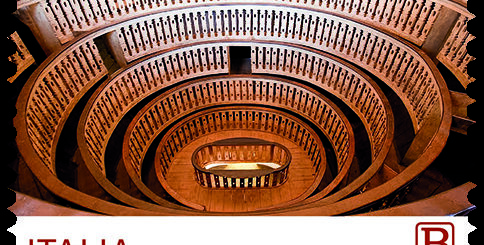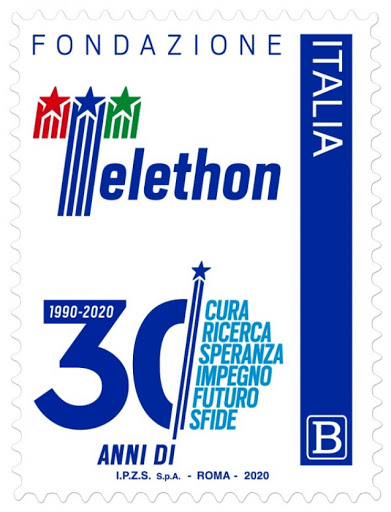POSTE ITALIANE 20^ emissione del 02 luglio 2020 di un francobollo dedicato al Magistrato Mario Amato, nel 40° anniversario della morte
POSTE ITALIANE 20^ emissione del 02 luglio 2020 di un francobollo dedicato al Magistrato Mario Amato, nel 40° anniversario della morte

Il Ministero dello Sviluppo con le Poste Italiane emette il 2 luglio 2020 un francobollo ordinario appartenente alla serie tematica” il Senso civico” dedicato al Magistrato Mario Amato nel 40° anniversario della morte, relativo al valore della tariffa B, corrispondente ad €1.10.
- data 02 luglio 2020
- dentellatura 11
- stampa rotocalcografia
- tipo di carta carta bianca autoadesiva
- stampato I.P.Z.S. Roma
- tiratura 400.000
- dimensioni 30 x 40 mm
- valore B = €1.10
- bozzettista: Elettra Fiorini
- num. catalogo Michel 4202 YT UN 4045
Se sei interessato all’acquisto di questo francobollo lo puoi acquistare al prezzo di € 1.50. Inviami una richiesta alla email: protofilia1@gmail.com

Mario Amato (Palermo, 24 novembre 1937 – Roma, 23 giugno 1980) è stato un magistrato italiano. Sostituto procuratore della Repubblica di Roma, fu assassinato da due esponenti dell’organizzazione eversiva neofascista Nuclei Armati Rivoluzionari, mentre era titolare di tutte le inchieste sul terrorismo nero nel Lazio.
Biografia
Carriera e indagini sull’eversione nera
Dopo essere stato sostituto procuratore presso la Procura della Repubblica di Rovereto dal settembre del 1971 all’estate del 1977, il 30 giugno 1977 Mario Amato fu trasferito con la stessa qualifica presso la Procura di Roma.
Ebbe incarico dal Procuratore Generale Giovanni de Matteo di riprendere le indagini avviate dal magistrato Vittorio Occorsio, che era stato ucciso mentre indagava sul gruppo di destra eversiva dei NAR e sul neofascista Pierluigi Concutelli (le indagini dimostrarono successivamente che fu proprio il Concutelli l’autore dell’omicidio Occorsio). Amato ebbe allora la promessa – mai mantenuta – di essere affiancato da uno o due altri colleghi. Con Vittorio Occorsio, Mario Amato fu il primo magistrato a «tentare una “lettura globale” del terrorismo nero. Attraverso i parziali successi delle indagini su singoli episodi terroristici disse davanti al Consiglio Superiore della Magistratura il 13 giugno 1980 – solo dieci giorni prima di essere ucciso -:
| «sto arrivando alla visione di una verità d’assieme, coinvolgente responsabilità ben più gravi di quelle stesse degli esecutori materiali degli atti criminosi.» |
Amato riuscì a ricostruire le connessioni tra destra eversiva e Banda della Magliana e intuì i legami tra sottobosco finanziario, economico e potere pubblico. Aveva scoperto, tra l’altro, che i NAR cercavano un’alleanza “tattica” con gli estremisti di sinistra» (come auspicato da anni da Franco Freda, il teorico dell’alleanza tattica con il terrorismo di opposto colore e a quel tempo sotto processo per la strage di Piazza Fontana), e che il gruppo facente capo a Fioravanti era organizzato alla stregua delle Brigate Rosse e stava diventando estremamente pericoloso.
Fu però lasciato solo a svolgere queste indagini, isolato dai suoi superiori e oggetto di continui attacchi da parte del collega giudice Antonio Alibrandi (padre del terrorista dei NAR Alessandro e fedelissimo di Giusva Fioravanti). In una Procura della Repubblica che sarà poi chiamata spesso dalla stampa, riprendendo il titolo di un’opera di Georges Simenon, Il porto delle nebbie, Amato era destinato ad entrare presto così nel mirino della destra eversiva e terroristica.
Omicidio
Il «terrorismo nero» fu da lui perciò indagato nella più sconsolante solitudine e solo rimase fino alla mattinata del 23 giugno 1980 poche settimane prima della Strage di Bologna.
Ricevuto un diniego per l’uso di una vettura blindata, per le “difficoltà” di fargli arrivare alle 8,00 del mattino uno degli autisti (che entravano in servizio solo alle 9,00), Mario Amato non ebbe modo di giungere in sicurezza nel suo ufficio alla Procura, in Piazzale Clodio. Mentre attendeva un autobus alla fermata posta all’incrocio tra Viale Jonio e Via Monte Rocchetta, il sostituto procuratore fu raggiunto alle spalle da Gilberto Cavallini che gli esplose alla nuca un colpo di rivoltella fatale, per poi fuggire con una motocicletta che lo aspettava, alla cui guida era l’altro NAR Luigi Ciavardini. Alla notizia dell’avvenuto assassinio, i pluriomicidi Giusva Fioravanti e Francesca Mambro festeggiarono, secondo le loro stesse dichiarazioni, consumando ostriche e brindando con champagne. Stilarono poi il volantino di rivendicazione in cui affermavano: «oggi Amato ha chiuso la sua squallida esistenza, imbottito di piombo».
Nel 1981 gli viene intitolata in segno di omaggio l’aula delle udienze penali del Tribunale di Rovereto. Il 23 giugno 2012, nell’anniversario della morte, dopo una cerimonia di ricordo, il Comune di Rovereto gli ha dedicato una via posta alle spalle del tribunale cittadino; il Comune di Roma lo ha ricordato con una via nei pressi di Piazzale Clodio.
ITALIAN POSTS 20th issue of 02 July 2020 of a stamp dedicated to the magistrate Mario Amato, on the 40th anniversary of his death

On 2 July 2020, the Ministry issued an ordinary stamp belonging to the thematic series “the civic sense” dedicated to the magistrate Mario Amato on the 40th anniversary of his death, relating to the value of tariff B, corresponding to € 1.10.
- date 02 luglio 2020
- serration 11
- printing rotogravure
- paper type white self-adhesive paper
- printed I.P.Z.S. Roma
- edition 400.000
- value B = € 1.10
- dimension 30 x 40 mm
- designer: Elettra Fiorini
- num. catalog Michel YT UN
If you are interested in purchasing this stamp, you can buy it for € 1.50. Send me a request to the email: protofilia1@gmail.com
Mario Amato (Palermo, 24 November 1937 – Rome, 23 June 1980) was an Italian magistrate. Substitute procurator of the Republic of Rome, he was assassinated by two exponents of the neo-fascist subversive organization Nuclei Armati Revolutionari, while he was the owner of all the investigations on black terrorism in Lazio.
Biography
Career and investigation into black subversion
After being substitute prosecutor at the public prosecutor’s office in Rovereto from September 1971 to the summer of 1977, on June 30, 1977 Mario Amato was transferred with the same qualification to the public prosecutor’s office in Rome.
He was commissioned by the Attorney General Giovanni de Matteo to resume the investigations initiated by the magistrate Vittorio Occorsio, who had been killed while investigating the subversive right-wing group of the NARs and the neo-fascist Pierluigi Concutelli (the investigations showed later that it was precisely the Concutelli the author of the murder Occorsio). Amato then had the promise – never kept – of being joined by one or two other colleagues. With Vittorio Occorsio, Mario Amato was the first magistrate to “attempt a” global reading “of black terrorism. Through the partial success of the investigation into individual terrorist incidents, he said before the Superior Council of the Judiciary on June 13, 1980 – only ten days before he was killed -:
“I am coming to the vision of an overall truth, involving far more serious responsibilities than those of the material perpetrators of the criminal acts.”
Amato managed to reconstruct the connections between the subversive right and the Banda della Magliana and sensed the links between the financial, economic and public power undergrowth. He had discovered, among other things, that the NARs sought a “tactical” alliance with the left-wing extremists »(as hoped for years by Franco Freda, the theorist of the tactical alliance with terrorism of the opposite color and at the time on trial for the massacre in Piazza Fontana), and that the group headed by Fioravanti was organized like the Red Brigades and was becoming extremely dangerous.
However, he was left alone to carry out these investigations, isolated from his superiors and subject to continuous attacks by his colleague judge Antonio Alibrandi (father of the NAR terrorist Alessandro and loyal to Giusva Fioravanti). In a public prosecutor’s office that will then be called often by the press, taking up the title of a work by Georges Simenon, The Mist Port, Amato was destined to soon enter the target of the subversive and terrorist right.
Murder
The “black terrorism” was therefore investigated by him in the most disconsolate solitude and only remained until the morning of June 23, 1980 a few weeks before the massacre in Bologna.
Received a refusal for the use of an armored car, for the “difficulties” of getting one of the drivers to arrive at 8.00 in the morning (who entered service only at 9.00), Mario Amato had no way of arriving safely in his office at the Prosecutor’s Office, in Piazzale Clodio. While waiting for a bus at the stop at the intersection of Viale Jonio and Via Monte Rocchetta, the substitute attorney was reached behind him by Gilberto Cavallini who exploded a fatal revolver shot in the back of his neck, and then fled with a motorcycle waiting for him, at the whose guide was the other NAR Luigi Ciavardini. At the news of the murder, the multiple killers Giusva Fioravanti and Francesca Mambro celebrated, according to their own statements, consuming oysters and toasting with champagne. They then drew up the claim flyer in which they stated: “today Amato has closed his shabby existence, stuffed with lead”.
In 1981, the courtroom of the Rovereto Court was named as a tribute. On June 23, 2012, on the anniversary of his death, after a remembrance ceremony, the Municipality of Rovereto dedicated a street to him behind the city court; the Municipality of Rome recalled it with a street near Piazzale Clodio.







